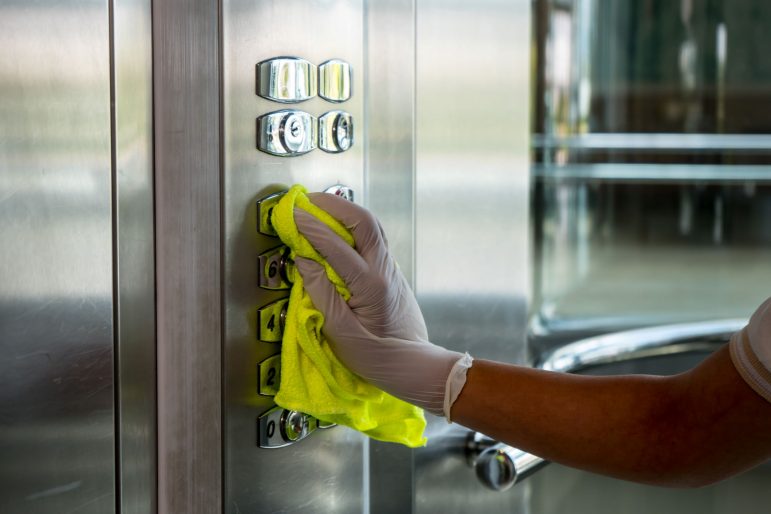Since the beginning of the COVID-19 pandemic, building managers have continued to play a crucial role in maintaining facilities to maximize cleanliness, health, and safety. Now, over a year later, reopening is the biggest question on everyone’s mind.
While it’s difficult to predict exactly how many workers will return to office buildings and commercial facilities, there’s no question that this is the time to plan ahead. Facility managers should take this time to ensure they are equipped for enhanced cleaning maintenance requirements and begin preparing for their facility’s reopening.
Here are four key considerations to help keep facilities clean, healthy, and safe as they reopen:
Budget for additional operating expenses
It’s clear that facility maintenance has completely changed over the last 16 months or so and will continue to evolve once companies are able to allow their workers to return to the office. Standards and expectations around building health and hygiene will continue to rise, requiring higher operating expenses to meet them. Whether they’re currently operating at a limited capacity or their workforce is entirely remote, facility managers should budget for additional operating expenses to keep employees safe.
The largest expense to budget for is additional labour or janitorial costs for deep cleaning and disinfecting. Not only is it important to consider the additional cost of enhanced daily cleaning, but facility managers should also plan for the cost of disinfecting their entire facility if it’s exposed to a COVID-19 case.
Facility managers should also allocate funds to purchase supplies and equipment that help promote and maintain building health. This includes setting up additional hand hygiene stations, ensuring facilities are stocked with personal protective equipment (PPE) for staff and visitors, and COVID-related costs like signage, posters, partitions, and barriers to help employees maintain physical distancing.
Take time to set up a cleaning program that works
Before the pandemic, many cleaning and hygiene professionals primarily focused on cleaning for appearance. While keeping surfaces and fixtures shining is still an important part of facility maintenance, today the need to clean for health is critical. This is the time to review facility cleaning programs, assess whether they’re meeting today’s requirements, and determine how to enhance them for the future.
An effective office cleaning program should include the following:
- Processes to tackle high-touch surfaces. Surfaces like door handles, meeting rooms, elevator buttons, coffee machines, and restroom fixtures should be disinfected at least twice a day. Keeping sanitizing wipes or a disinfectant spray and wiper combo near high-touch surfaces will encourage non-custodial workers to wipe surfaces before and after use.
- The right disinfecting products. Not all disinfectants are created equally. Disinfectants have specific kill claims, which outline which bacteria they are effective against, as well as a dwell time, which indicates how long the disinfectant must stay wet on a surface to effectively kill that bacteria. Disinfectants approved by Health Canada have a Drug Identification Number (DIN) which indicates that the product has been thoroughly tested.
- Innovative tools for faster, more effective cleaning and disinfecting. Consider investing in innovative products and equipment that will make cleaning faster and more effective so that labour can be allocated to other tasks. Tools like electrostatic disinfecting systems cover significantly larger surface areas with disinfectants more effectively and in less time than traditional trigger sprayers.
- Updated training programs for cleaning teams. The right training will help keep teams safe when using cleaning tools and chemistries, improve cleaning quality, reduce turnover, and provide greater job satisfaction. Training courses like the Global Biorisk Advisory Council (GBAC) certifications are available online and teach cleaning professionals to prepare for, respond to, and recover from biohazards in the workplace.
Plan ahead
With most offices working at a reduced worker volume, this is the time for facility managers to evaluate their existing cleaning programs and prepare for reopening. Along with developing an enhanced cleaning program and sourcing appropriate PPE, facility managers should also set up an outbreak prevention and management plan. Establishing a process for how to handle any potential COVID-19 cases will allow for quick action to prevent the spread of illness and help minimize business disruption.
Mitigate risk: verify and validate results
Today, maintaining clean and healthy facilities is necessary to providing exceptional customer service and meeting employees’ expectations around health and safety. Facility managers are using digital cleaning program management software to log cleaning activities and optimize cleaning resources to verify and validate their results.
Digital cleaning program management systems help facility managers:
- Verify that cleaning activities are completed as scheduled
- Identify missed cleanings
- Immediately uncover and manage training issues
- Quickly and easily prepare detailed reporting without having to sift through paper cleaning logs
- Validate adherence to cleaning protocols.
Systems like wandaNEXT™ by Visionstate IoT send cleaning teams alerts when additional cleaning is required and also include location-specific cleaning task lists, real-time compliance reporting, people traffic monitoring, and more.
David L. Smith is the Cleaning Hygiene & Sanitation Director at Bunzl Canada, a national distributor of the cleaning and hygiene products and equipment, food and retail packaging, safety products and industrial supplies that keep over 45,000 Canadian businesses running optimally every day. Bunzl Canada Inc. is a division of Bunzl Distribution USA, LLC.








